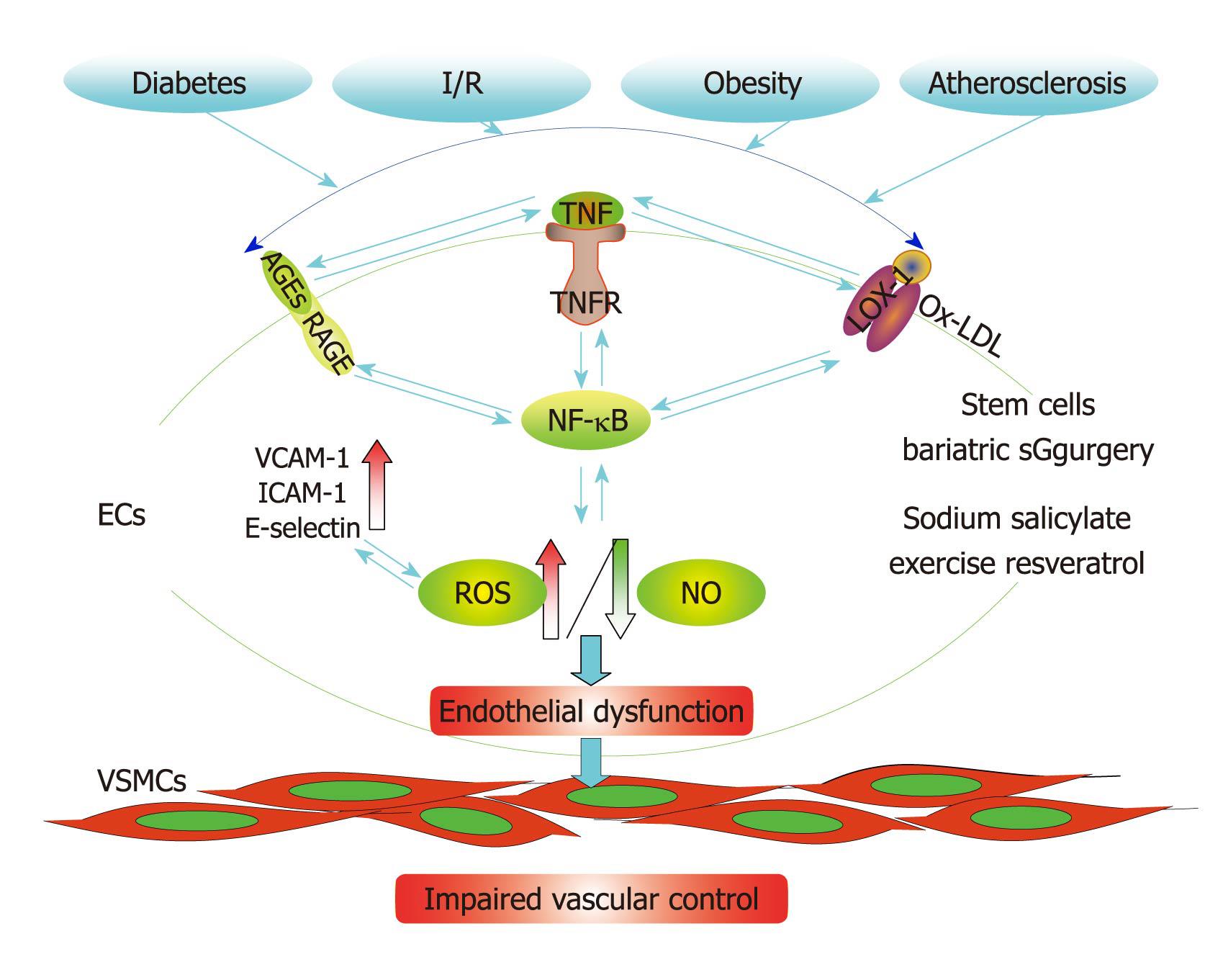Copyright
©2011 Baishideng Publishing Group Co.
Figure 5 Activation of inflammatory cytokines leads to the interaction of advanced glycosylation end product and their receptor and oxidized low-density lipoprotein/lectin-like oxidized low-density lipoprotein receptor-1, which causes progression of inflammatory disorders which initiates endothelial dysfunction and culminates in coronary microcirculation in type 2 diabetes, ischemia/reperfusion injury, obesity, and atherosclerosis.
The excessive production of tumor necrosis factor (TNF)-α has a deleterious downstream effect by augmentation of superoxide production and limiting nitric oxide (NO) bioavailability in endothelial cells, which results in reduction of NO-dependent vasodilation. My laboratory is focusing on anti-inflammatory and antioxidative stress therapeutic effects, and the roles of sodium salicylate, exercise and resveratrol in type 2 diabetes, ischemia/reperfusion (I/R) injury, obesity, and atherosclerosis. Recently, we have started looking at the effects of stem cells and bariatric surgery on vascular dysfunction in obesity and diabetes. ROS: Reactive oxygen species; NF-κB: Nuclear factor κB; Ox-LDL: Oxidized low-density lipoprotein; LOX-1: Lectin-like oxidized low-density lipoprotein receptor-1; AGEs: Advanced glycosylation end products; RAGE: Advanced glycosylation end products receptor; ECs: Endothelial cells; VSMCs: Vascular smooth muscle cells.
- Citation: Zhang C. Cardiovascular physiology at the bench for application in the clinic. World J Cardiol 2011; 3(2): 59-64
- URL: https://www.wjgnet.com/1949-8462/full/v3/i2/59.htm
- DOI: https://dx.doi.org/10.4330/wjc.v3.i2.59









